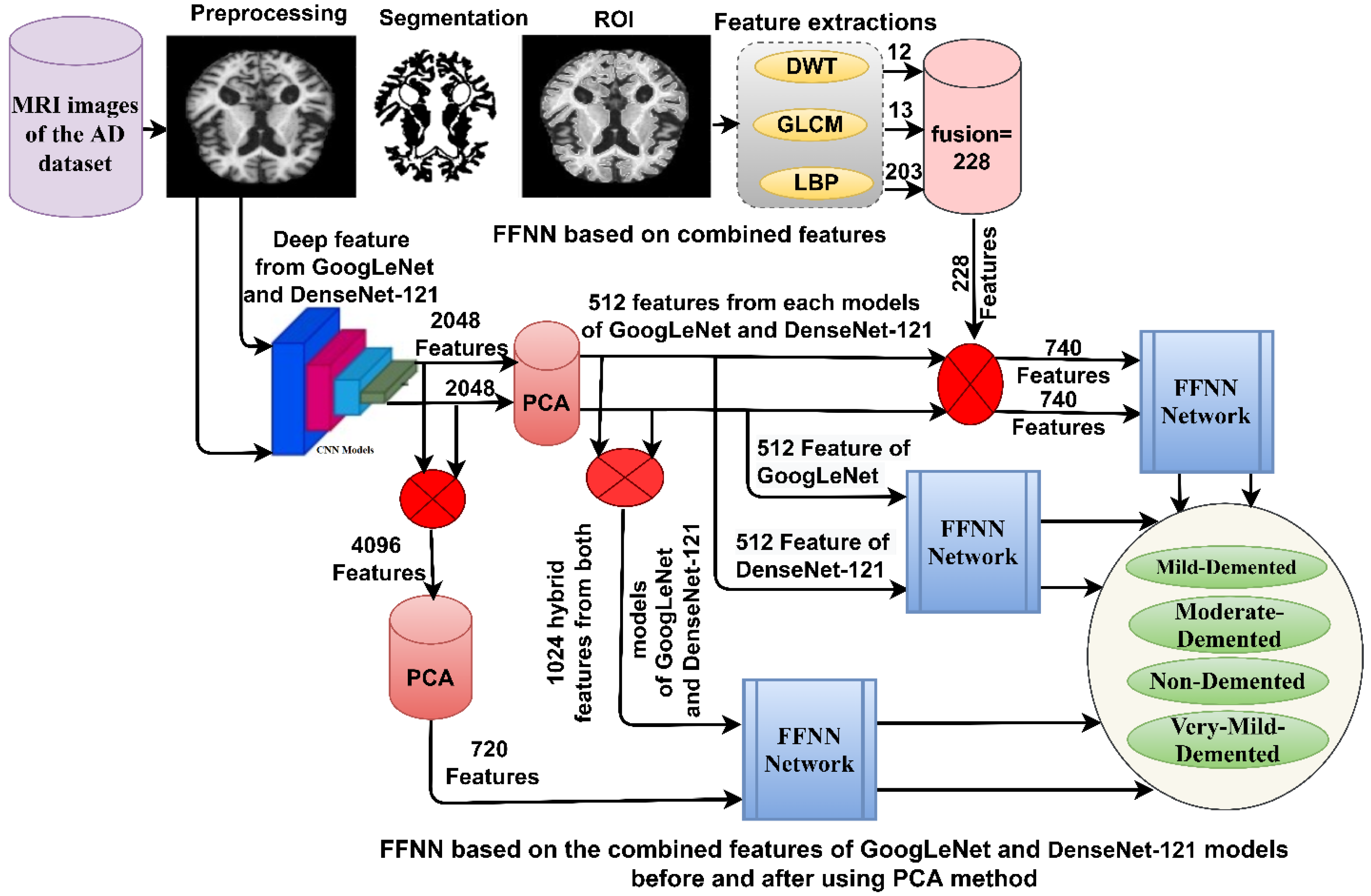Alzheimer’s detection is becoming increasingly essential as we strive to identify cognitive impairment before symptoms manifest. Recent advancements, particularly the olfactory test developed by researchers at Mass General Brigham, highlight how the sense of smell could serve as an early warning indicator for Alzheimer’s and other neurodegenerative diseases. This innovative approach allows individuals to take an at-home test by identifying and memorizing scents, making early detection of cognitive impairment more accessible. The findings, published in *Scientific Reports*, indicate that older adults exhibiting signs of cognitive decline often struggle with smell differentiation compared to their cognitively healthy peers. As researchers continue to explore these connections, early detection Alzheimer’s methods such as these may significantly impact the trajectory of neurodegenerative disease intervention.
The landscape of diagnosing Alzheimer’s often involves a range of approaches to uncover early signs of cognitive issues. Innovative techniques like the aroma-based assessment provide unique insights into how sensory evaluation can predict memory-related disorders years before they become clinically evident. This method not only emphasizes the importance of olfactory function but also suggests a broader application for identifying individuals at risk for various types of neurological decline. By understanding cognitive deficits through the lens of sensory capabilities, healthcare professionals can create more effective monitoring systems for patients potentially facing neurodegenerative health challenges. As awareness grows around these early indicators, various terms associated with Alzheimer’s and cognitive impairment are gaining relevance in both clinical settings and public consciousness.
Understanding Early Detection of Alzheimer’s
The early detection of Alzheimer’s is a crucial step in managing cognitive decline and potentially delaying the onset of disease symptoms. Traditional methods of diagnosis often involve comprehensive neuropsychological assessments, which can be both time-consuming and costly. However, emerging research indicates that olfactory testing, which evaluates an individual’s ability to identify, discriminate, and remember smells, presents a promising alternative. By utilizing smell tests, researchers are finding innovative ways to detect cognitive impairment long before memory issues become apparent.
A recent study conducted by Mass General Brigham highlights the potential of olfactory testing as a noninvasive, at-home screening tool. Participants in this study—many of whom reported concerns about their cognitive abilities—showed that those with mild cognitive impairment consistently scored lower on olfactory tests as compared to their cognitively healthy counterparts. These findings underscore the importance of integrating olfactory assessments into routine evaluations for older adults, paving the way for earlier intervention in at-risk individuals.
The Role of Olfactory Tests in Identifying Cognitive Decline
Olfactory tests have gained attention for their ability to identify early signs of cognitive impairment through a simple and accessible method. In the context of neurodegenerative diseases such as Alzheimer’s, olfactory dysfunction can serve as an early warning signal. Researchers are exploring how the loss of smell correlates with cognitive deterioration, with the hope that addressing these early indicators can lead to timely interventions. The results from the Mass General Brigham study suggest that the implementation of olfactory tests could revolutionize how we approach Alzheimer’s detection, shifting the paradigm towards preventative care.
The study’s authors, led by neuroscientist Mark Albers, emphasize the feasibility of using olfactory tests as a reliable tool in various clinical settings. Participants were able to conduct these tests independently at home, demonstrating that such assessments might be easy to incorporate into regular health check-ups. If widely adopted, this method could foster an increased awareness of cognitive health, providing individuals with the opportunity to seek medical advice and potentially slowing the progression of conditions like Alzheimer’s before significant cognitive impairment occurs.
Impact of Neurodegenerative Diseases on Smell and Cognition
Neurodegenerative diseases, such as Alzheimer’s and Parkinson’s, have multifaceted impacts on cognitive functions, including memory, reasoning, and sensory perception. As the population ages, the need for effective detection methods becomes increasingly urgent. Olfactory dysfunction is emerging as a common early manifestation of these diseases, often appearing years before major symptoms of memory loss or cognitive decline occur. This overlap highlights the potential for olfactory testing to serve not only as a diagnostic tool but also as a measure of cognitive health.
The insights drawn from studies on olfactory function suggest that understanding the pathophysiology behind smell loss may unveil new avenues for treatment and prevention. The findings that older adults with cognitive impairment showed lower olfactory test scores speak to the broader implications for early detection. As research continues to explore the connections between the sense of smell and neurodegenerative conditions, it may open pathways for innovative therapies and enhanced quality of life for those at risk of Alzheimer’s and related disorders.
Cognitive Impairment: Signs and Symptoms
Cognitive impairment can manifest in various ways, starting from subtle memory lapses to more profound issues affecting daily life. Early signs may include difficulties in recalling recent events, trouble following conversations, or changes in problem-solving abilities. Recognizing these early symptoms is essential for achieving timely intervention and managing potential neurodegenerative diseases effectively. The integration of olfactory tests as part of a broader assessment strategy can enhance our ability to identify individuals at risk of these debilitating conditions.
In particular, studies focusing on subjective cognitive complaints—where individuals express concerns about their memory—hint at underlying issues that may warrant further investigation. Participants in the Mass General Brigham study who reported cognitive complaints often displayed poor performance on olfactory tests, illustrating a significant correlation between smell function and cognitive health. This emphasizes the value of promoting awareness of cognitive impairment and utilizing simple tests to encourage proactive health management among older adults.
The Importance of Multi-Disciplinary Approaches in Cognitive Health
Addressing cognitive health, especially in the context of Alzheimer’s and other neurodegenerative diseases, requires a comprehensive and multi-disciplinary approach. Researchers and healthcare professionals recognize that effective management goes beyond treatment; it involves early detection, patient education, and support systems that prioritize cognitive wellness. Collaborations across various fields—from neurology to geriatrics—can facilitate an environment where innovative research, like the olfactory test studies, translates into clinical practice.
Moreover, engaging different stakeholders, including patients, scientists, and practitioners, allows for a richer perspective on cognitive decline and its implications. As findings from studies such as those conducted at Mass General Brigham become more widely acknowledged, the healthcare community must work together to incorporate these findings into routine practice. A concerted effort will ensure that tools like olfactory tests reach those who need them, fostering early intervention strategies that can significantly alter the trajectory of cognitive diseases.
Funding and Support in Alzheimer’s Research
The advancement of research into Alzheimer’s detection and treatment heavily relies on funding from prestigious institutions such as the National Institutes of Health. Support for innovative projects that explore cutting-edge methods like olfactory testing is crucial for translating scientific discovery into practical healthcare solutions. Such funding not only sustains individual research efforts but also encourages collaboration among institutions, ultimately benefiting patients facing cognitive challenges.
Moreover, government and private funding can help streamline the process of transitioning from research phase to public health initiatives. When studies demonstrate promising results, as seen in the Mass General Brigham study, funding ensures that further investigations can be conducted to validate findings and develop comprehensive strategies for implementing these tests on a larger scale. This financial backing is essential in bridging the gap between research and real-world application, enhancing early detection methodologies for conditions like Alzheimer’s.
The Future of Alzheimer’s Detection and Treatment
As research progresses, the future of Alzheimer’s detection is likely to be characterized by innovative, noninvasive approaches that prioritize patient convenience and accessibility. The development of at-home olfactory tests exemplifies a shift towards more user-friendly assessments that empower individuals to take charge of their cognitive health. With the data suggesting reliable correlations between olfactory performance and cognitive status, future advancements can refine these tests and integrate them into standard screening practices.
Moreover, ongoing research will focus on enhancing the accuracy of these tests, exploring new methodologies, and understanding the underlying mechanisms linking olfactory dysfunction to neurodegenerative diseases. As we look ahead, embracing technology and leveraging longitudinal studies may unearth additional predictive markers for cognitive decline, ultimately leading to timely intervention strategies and improved outcomes for those at risk for Alzheimer’s. Collaboration across disciplines and continuous funding support will be the bedrock of these advancements in Alzheimer’s detection and treatment.
Raising Awareness About Cognitive Health
Raising awareness about the importance of cognitive health is vital in promoting early detection and intervention for Alzheimer’s and related diseases. Public education campaigns can help demystify the signs of cognitive decline, encouraging individuals to seek assessment and support as needed. By emphasizing the role of olfactory testing as a simple, innovative method for gauging cognitive health, we can mobilize communities to become proactive in their health decisions.
Community-based initiatives can also facilitate discussions around cognitive impairment, thereby reducing stigma and encouraging those experiencing symptoms to come forward. Educational resources, workshops, and outreach programs can further enhance understanding among older adults and caregivers about the early signs of Alzheimer’s. As awareness grows, the potential for broader adoption of olfactory tests will increase, fostering a society better equipped to tackle the challenges associated with neurodegenerative diseases.
The Role of Language in Olfactory Testing
Language plays an essential role in the accessibility and effectiveness of olfactory testing, as demonstrated by the Mass General Brigham study, which included participants from diverse linguistic backgrounds. The researchers found that regardless of language—whether English or Spanish—participants performed comparably on the olfactory test, highlighting the adaptability and inclusivity of this assessment method. This characteristic is particularly important for broadening the reach of cognitive health assessments among culturally and linguistically diverse communities.
Furthermore, ensuring that olfactory tests are available in multiple languages can significantly impact how we approach cognitive health globally. By removing language barriers, researchers and clinicians can promote early detection among varied populations, fostering a more inclusive strategy for addressing cognitive impairment. This awareness surrounding the role of language is crucial for developing tools that resonate across communities, supporting widespread engagement in proactive health measures aimed at detecting Alzheimer’s and other neurodegenerative diseases.
Frequently Asked Questions
What is the role of olfactory tests in early detection of Alzheimer’s?
Olfactory tests play a crucial role in the early detection of Alzheimer’s by assessing an individual’s ability to identify and remember smells. Research from Mass General Brigham indicates that older adults with cognitive impairment score lower on these tests, making them a potential early warning sign of Alzheimer’s and other neurodegenerative diseases.
How does early detection of cognitive impairment relate to Alzheimer’s disease?
Early detection of cognitive impairment is vital for identifying individuals at risk of developing Alzheimer’s disease. It allows for timely interventions, potentially delaying the onset of memory-related symptoms. Studies suggest that tools like olfactory tests can be employed at home to facilitate this early detection process.
Can the olfactory test for Alzheimer’s be performed at home?
Yes, the olfactory test developed by researchers at Mass General Brigham can be easily performed at home. Participants simply sniff odor labels on a card to assess their smell discrimination ability, making it a convenient and cost-effective method for early detection of Alzheimer’s risk.
What are the benefits of using olfactory tests in Alzheimer’s detection?
The benefits of using olfactory tests in Alzheimer’s detection include their noninvasive nature, cost-effectiveness, and ease of administration at home. This approach can help identify cognitive impairment early, facilitating earlier interventions and potentially improving outcomes for individuals at risk of neurodegenerative diseases.
What findings did the Mass General Brigham study reveal about smell and Alzheimer’s?
The Mass General Brigham study found that older adults exhibiting cognitive impairment performed significantly worse on olfactory tests compared to cognitively normal individuals. This suggests that olfactory dysfunction can be an important indicator of cognitive decline and may aid in the early detection of Alzheimer’s disease.
How does age affect olfactory performance related to Alzheimer’s detection?
Age significantly impacts olfactory performance, as research indicates that both odor identification and discrimination decline with age. Older adults, particularly those with mild cognitive impairment, are likely to demonstrate reduced capabilities in these areas, thereby aiding in the early detection of Alzheimer’s risk.
What does the Aromha Brain Health Test do in relation to Alzheimer’s detection?
The Aromha Brain Health Test is an olfactory assessment tool designed to identify individuals at risk for Alzheimer’s by evaluating their odor identification, memory, and discrimination abilities. This tool was utilized in the Mass General Brigham study, emphasizing its potential for early detection of cognitive impairment associated with neurodegenerative diseases.
Are olfactory tests effective across different languages for Alzheimer’s detection?
Yes, the olfactory tests for Alzheimer’s detection have shown effectiveness across different languages, as evidenced by the Mass General Brigham study. Participants who spoke both English and Spanish demonstrated similar performance, indicating the tests’ broad applicability in diverse populations.
What is the relationship between olfactory dysfunction and Alzheimer’s disease?
Olfactory dysfunction, which can manifest as a diminished sense of smell, has been linked to the early stages of Alzheimer’s disease. Researchers believe it may serve as an early indicator of neurodegenerative conditions, making olfactory tests a valuable tool in Alzheimer’s detection.
What future studies are suggested based on olfactory testing for Alzheimer’s detection?
Future studies on olfactory testing for Alzheimer’s detection are suggested to incorporate neuropsychological evaluations and longitudinal follow-ups to better understand its predictive capabilities for cognitive decline and the progression to Alzheimer’s symptoms.
| Key Point | Details |
|---|---|
| Study Overview | Researchers at Mass General Brigham have developed an at-home olfactory test to detect early signs of Alzheimer’s disease. |
| Test Methodology | Participants sniff odor labels on a card to assess their ability to identify, discriminate, and remember smells. |
| Significance of Findings | The test successfully identifies older adults with cognitive impairment who score lower than cognitively normal counterparts. |
| Future Implications | The findings suggest potential for early Alzheimer’s detection and intervention years before symptoms manifest. |
| Multilingual Study | The study included both English and Spanish-speaking participants, ensuring broader applicability of the test. |
| Olfactory Dysfunction | Loss of sense of smell may indicate risk for neurodegenerative diseases like Alzheimer’s and Parkinson’s. |
| Research Funding | The study was funded by the National Institutes of Health, emphasizing its importance and credibility. |
Summary
Alzheimer’s detection has taken a promising turn with new research showing that olfactory tests can identify those at risk of Alzheimer’s disease years before symptoms emerge. By testing one’s ability to recognize and remember odors, researchers have found a potential early warning system for cognitive decline. These findings not only highlight the importance of early intervention but also pave the way for noninvasive testing methods that can be conducted at home. As the research progresses, the hope is to refine these tests further to enhance their predictive capabilities and expedite necessary clinical responses.




